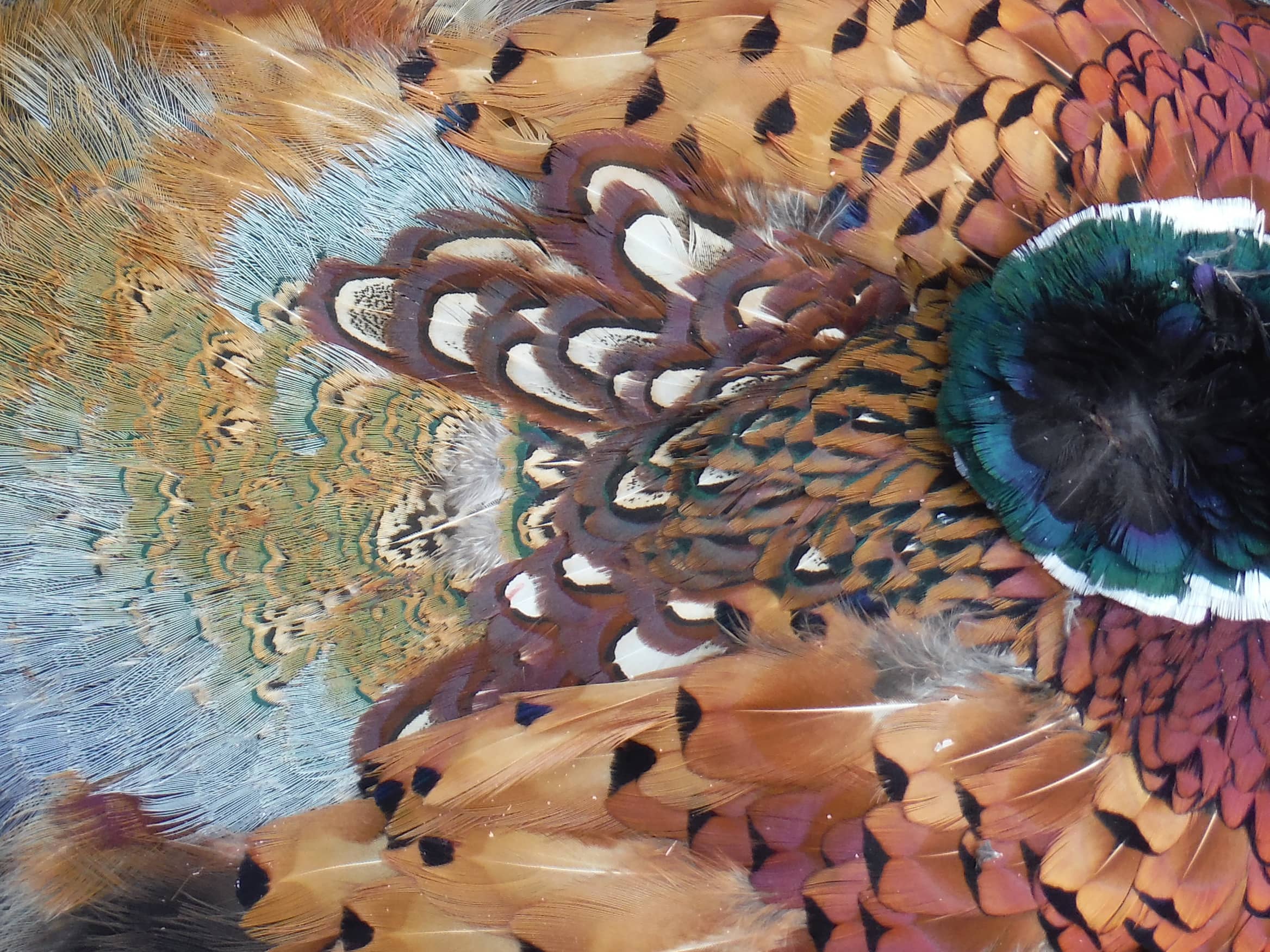
The skin of mature rooster pheasant provides more feathers than most could every use in a lure making season. Simonson Photo
By Nick Simonson
Autumn is often a brief part of the circle of seasons in the upper Midwest, but for those that piggyback their ice fishing or angling success on the hunting adventures that come with it, it may be the most important portion of the year.
The wide and varied game bag afforded hunters in the region – including pheasants, ducks, partridge, even turkeys – provides a stash of materials for those who create jigs, tie flies and craft tackle of all kinds. Selecting the perfect pelt from any of those birds and preserving it requires a keen eye and a slow hand, but with a little practice can become second nature.
Pelt Pointers
When picking any bird out of the game bag to skin and preserve for tackle making, it’s important to make sure it is one that is well colored. This often means selecting a mature bird with a full cape of feathers. In the case of upland birds, rooster pheasants that are at least one year old – with large spurs and longer tails – will provide the best pelts as younger roosters will likely have smaller and less colored feathers, especially at this point in the season. Look for feathers that have a strong iridescence and for tail feathers that have a lavender or even purple trim at their edges. Like scouting a piece of habitat to hunt, you know a good pelt when you see it after a few seasons of experience.
In addition to the quality of the feathers, it’s important to inspect the field condition of the pelt before skinning out the bird. If the pheasant or duck’s body is shot up, and the skin has multiple breaks from pellets, it may be worth moving on to the next one to find a better option. Excess blood, dirt or mud on the pelt might also decrease the quality of feathers and the work required to salvage it.
Skin To Win
Picking out the bird to save for your fly tying activities is the easy part, skinning it can be a challenge, especially for the first time. Even on the initial attempt however, going slow will still result in a great pelt that should only take about 15 minutes to remove. Start by clipping the wing bones as close to the body as possible, and do the same with the legs. With an incision up the breast of the bird, begin the process of slowly peeling the skin away from the meat and bones. On a pheasant, a cut will have to be made through the tail muscles to separate it from the body and keep it part of the skin, and if the cut goes through, don’t worry, the pelt is still intact and can be stored separately from the tail.
Follow the guide at the link below, and adjust it to any other bird harvested in the field. The process works best on a fresh bird that might still be warm following harvest, so keep that in mind. Follow the process outlined in the picture tutorial for a better idea.
Once the pelt is removed, treat the skin side with a heavy rubbing of salt or borax. This will help remove moisture from the skin, limit bacteria and related degradation, and stiffen the pelt for easy handling.
Place the pelt in a large Ziploc bag and place it in the freezer to kill any mites and further reduce moisture. When the season is over and it’s time to tie up those flies and jigs, pull the pelt out of the freezer shake and brush off the excess salt or borax and the pelt is ready to go.
From the autumn to the winter, the feathers of pheasants, ducks, grouse and turkeys can be used to make all sorts of tackle. Great nymphs for panfish and trout, streamers for smallmouth bass, marabou jigs for walleyes are just the beginning with the creativity that can come from the incredible resource.
Save a few and see what comes together at the lure making desk in the seasons to come.
